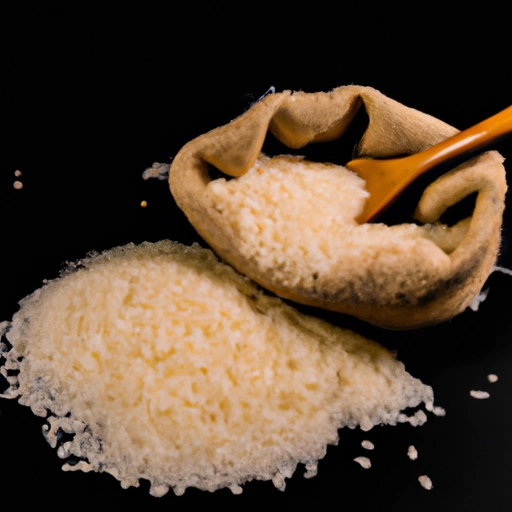Short-Grain Rice
Description

Short-grain rice, characterized by its plump, almost round kernels, is a type of rice that has a higher starch content, specifically amylopectin, than its long and medium-grain cousins. This results in a stickier, more clump-prone texture upon cooking, making it a preferred choice in dishes that benefit from creamier consistency. When cooked, short-grain rice tends to be moist and tender, with grains that stick together, and it's used in a variety of culinary applications across different cultures.
Common uses
Short-grain rice is commonly used in dishes where a creamy texture is desired, such as risotto, sushi, and rice pudding. It's also a key ingredient in many traditional Asian dishes, including Korean bibimbap and Japanese onigiri. The stickiness of short-grain rice makes it suitable for moldable recipes and dishes that require the rice to hold its shape.
Nutritional value
Calories
Short-grain rice contains approximately 130-150 calories per 100 grams (3.5 oz) or about 200 calories per 1 cup (45g or 1.6 oz) when cooked.
Protein
It typically provides around 2.5 to 3 grams of protein per 100 grams (3.5 oz) or roughly 4 grams per 1 cup (45g or 1.6 oz) cooked serving.
Fat
Short-grain rice is low in fat, with less than 1 gram per 100 grams (3.5 oz) or 1 cup (45g or 1.6 oz) cooked serving.
Carbohydrates
The primary macronutrient in short-grain rice is carbohydrates, with about 29 grams per 100 grams (3.5 oz) or 45 grams per 1 cup (45g or 1.6 oz) of cooked rice.
Vitamins
While not a significant source of vitamins, short-grain rice can contain small amounts of B vitamins, particularly when consumed as whole grain or 'brown' rice.
Minerals
Short-grain rice may offer minerals such as iron, magnesium, and zinc, particularly in its unpolished 'brown' form.
Health benefits
As a good source of carbohydrates, short-grain rice provides energy for daily activities. The presence of B vitamins in whole grain varieties aids in metabolism, while the fiber content can contribute to digestive health. Its low fat content also makes it a heart-healthy choice.
Potential risks
Overconsumption of short-grain rice, particularly white rice, can lead to spikes in blood sugar levels, making it a concern for individuals with diabetes. Additionally, rice can accumulate arsenic from the environment, so moderation in consumption is advised.
Common recipes
Short-grain rice is the star in recipes like Japanese sushi, Spanish paella, Italian risotto, and Korean bibimbap. It's also used in sweet dishes such as rice pudding.
Cooking methods
Cooking methods for short-grain rice include boiling, steaming, and simmering. For sushi, the rice is seasoned with vinegar, while risotto involves a slow cooking process, adding broth in increments.
Pairing with other ingredients
Short-grain rice pairs well with a variety of ingredients including vegetables, seafood, meats, and legumes. It also complements rich sauces and broths due to its absorbent and creamy texture.
Summary
Short-grain rice is a versatile and globally cherished food ingredient that provides the foundation for many iconic dishes. Its unique texture and nutritional properties make it a valuable addition to a balanced diet, though care should be taken in its consumption due to potential blood sugar impacts and arsenic content. From a creamy Italian risotto to a delicate Japanese sushi roll, short-grain rice continues to be an essential component of the world's culinary heritage.